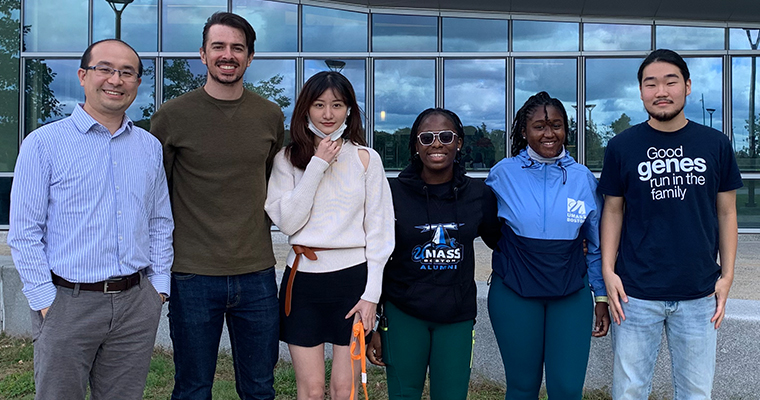New Exercise and Health Sciences NIH Research Grant Tackles Obesity and Type 2 Diabetes
With the prevalence of obesity in the U.S. reaching nearly 40 percent in recent years, more people are likely to experience impaired insulin action in the skeletal muscle—a key feature of obesity—resulting in insulin resistance and often type 2 diabetes.

Assistant Professor of Exercise and Health Sciences Kai Zou and his UMass Boston colleagues have received a three-year $455,847 National Institutes of Health R15 grant to work toward discovering new targets to regulate skeletal muscle insulin sensitivity with the goal of developing early treatments for type 2 diabetes.
Zou will collaborate on this interdisciplinary research project with co-investigators Associate Professor of Exercise and Health Sciences Philimon Gona, Associate Professor of Chemistry Jason Evans, and Assistant Professor of Computer Science Ozgun Babur, who will provide support and train students.
“We’re hoping this is one of the first steps that leads to more translational studies in human subjects that will eventually lead to new treatments in the future,” Zou said.
Zou and his research team at the Integrative Muscle Physiology Lab (IMPL), which is part of the Department of Exercise and Health Sciences and led by Zou, have been focusing on understanding how skeletal muscle metabolism is dysregulated at the cellular level with obesity and type 2 diabetes and how exercise can counteract these defects.
For this project, the research team is particularly interested in a protein called Dynamin-related protein 1 (Drp1), which controls mitochondrial architecture and quality. The mitochondria are the powerhouse in skeletal muscle cells and obesity and type 2 diabetes make them less efficient in producing energy. Zou's research team and other researchers have found that skeletal muscle from humans with obesity and type 2 diabetes exhibit highly active Drp1 and fragmented mitochondrial architecture, which is associated with skeletal muscle insulin resistance. However, we do not know if there is a causal link between hyperactive Drp1 and insulin resistance, Zou said.
To look more closely at the role of Drp1 in insulin resistance, the project will use genetically altered mice and human skeletal muscle cells with less Drp1 in the skeletal muscle, to answer the research question if decreasing Drp1 in skeletal muscle is enough to increase its ability to respond to insulin to take more sugar from blood and improve metabolic health in obese condition. The long-term goal of the research is to develop early interventions that can help people with obesity and diabetes control their blood sugar levels and improve overall metabolic health.
In addition to the project research, the NIH grant will help develop and boost the research team at the IMPL and provide more hands-on experiences for students to explore biomedical research and help make an impact with their career development, Zou said.
One of the goals of the NIH R15 grant is to expose undergraduate students to biomedical research and students from various science disciplines, especially those from underrepresented backgrounds, are invited to apply to work on this research project. They can join the research team to gain lab-based research experience by taking courses, including independent study, or participating in directed research and internships.
“Many students who were engaged in research in IMPL have chosen to pursue advanced degrees or work in areas in biomedical and health sciences” Zou said. “To have an impact on their future careers...I’m grateful from that perspective.”
